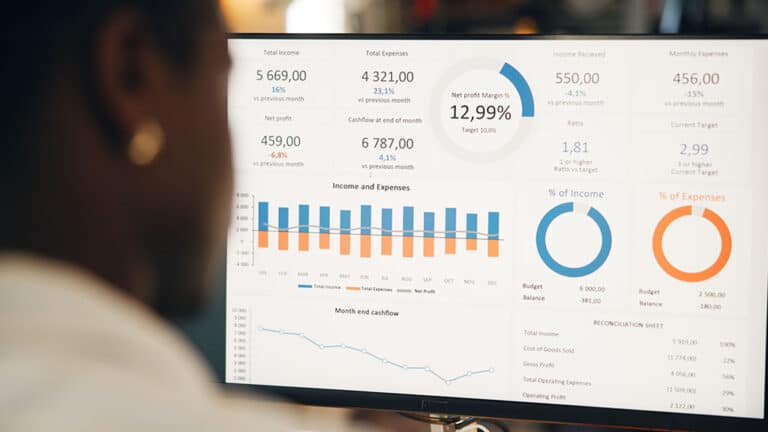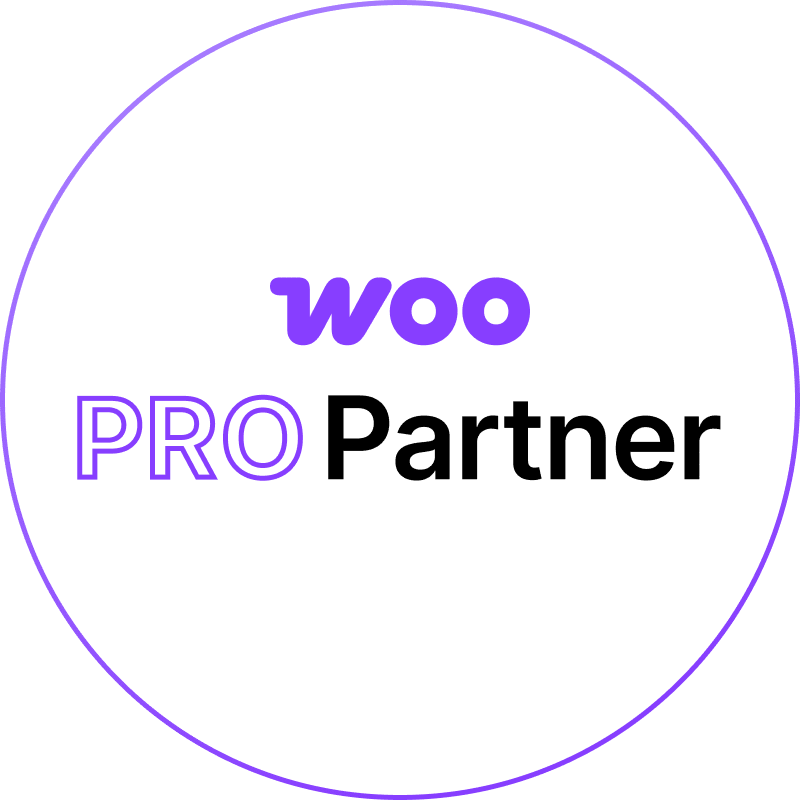5 Advanced Google Ads Tactics for E-Commerce Success
For e-commerce businesses, standing out in an increasingly crowded marketplace requires more than just basic advertising techniques. Google Ads is a powerful platform, but to truly succeed and maximize your ROI, you need to implement advanced tactics that refine your targeting, engage your audience more effectively, and optimize your campaigns for higher conversions. While many businesses can see success with standard campaigns, utilizing advanced Google Ads strategies is essential for staying ahead of the competition and driving sustained growth.
Advanced Google Ads tactics provide e-commerce businesses with the ability to scale their operations, attract more relevant traffic, and ultimately increase sales. By harnessing the full potential of Google Ads’ features—such as dynamic search ads, remarketing, smart bidding, and shopping ads—businesses can ensure that they are reaching their most valuable customers at the right time. These strategies are designed to take your Google Ads campaigns to the next level, ensuring that every click has the potential to turn into a sale.
In this guide, we will explore five advanced tactics that can significantly improve the performance of your e-commerce campaigns. From maximizing your product coverage with dynamic ads to using data-driven insights for smarter bidding and better targeting, these strategies are designed to help you achieve higher efficiency and a greater return on investment. If you’re looking for expert support in managing your campaigns, PPC management services can provide the tools and strategies to ensure your campaigns are optimized for success.
Implement Dynamic Search Ads (DSAs) for Product Coverage
One of the most effective advanced tactics for e-commerce businesses is the use of Dynamic Search Ads (DSAs). DSAs are designed to dynamically generate ad headlines and landing pages based on the content of your website, allowing you to capture searches for a broader set of products without the need to create individual ads for every product you sell. This feature is particularly valuable for businesses with large or frequently changing inventories, where manually creating ads for each item would be time-consuming and inefficient.
DSAs work by using Google’s crawlers to scan your website and match search queries with relevant pages. When someone searches for a product that you sell, Google automatically generates an ad that aligns with their search, making sure the ad copy and landing page are highly relevant. For example, if someone searches for “blue running shoes for men,” and your e-commerce site carries that product, Google will automatically generate an ad that includes the product and directs the user to the most relevant landing page.
While DSAs are incredibly useful for larger inventories, it’s important to optimize them to ensure the best performance. One of the key strategies is to segment your website content into categories, so your ads target specific product groups more accurately. For instance, you could create a campaign for “women’s shoes” and another for “men’s shoes,” ensuring that users searching for either category are shown the most relevant ads. Additionally, using negative keywords to filter out irrelevant searches will help you avoid wasted spend and improve ad relevance.
By implementing DSAs, e-commerce businesses can significantly increase their product coverage, capture more long-tail search queries, and drive higher traffic volumes without manually managing each product ad.
Use Remarketing with Dynamic Ads for Personalized Customer Engagement
Remarketing is an incredibly effective strategy for re-engaging users who have previously interacted with your site but didn’t convert. Dynamic remarketing takes this a step further by showing users personalized ads based on their previous interactions with your site. This means that if a customer browsed certain products, added items to their cart, or even visited specific categories, you can retarget them with ads that showcase exactly what they viewed or left behind.
For instance, imagine a customer visited your e-commerce store, browsed a few product pages, and added an item to their cart but left without completing the purchase. With dynamic remarketing, you can show them an ad featuring that exact product they viewed, along with a message like “Hurry, your cart is waiting” or “Get 10% off your order today!” This kind of personalized, timely follow-up can make a huge difference in turning a visitor into a paying customer.
Dynamic remarketing works by integrating your product feed with Google Ads, so ads are generated automatically based on the products users have previously interacted with. This is especially beneficial for e-commerce businesses that offer a wide range of products or seasonal items, as it ensures that customers are shown the most relevant and up-to-date options. Additionally, offering special promotions like discounts or free shipping can help incentivize return visits and conversions.
By using dynamic remarketing, you can significantly improve customer engagement and increase conversions, as customers are more likely to return when they are reminded of products they’re interested in and given an incentive to complete their purchase.
Take Advantage of Smart Bidding Strategies
Smart Bidding is an advanced feature within Google Ads that uses machine learning to automatically adjust bids in real time, optimizing for specific goals like conversions, return on ad spend (ROAS), or target cost per acquisition (CPA). Unlike manual bidding, where you set fixed bids for each keyword, Smart Bidding uses a variety of user signals such as device, location, time of day, and more, to adjust bids and ensure that your ads are shown to the most relevant users at the optimal time.
There are several Smart Bidding strategies you can choose from, depending on your business goals. For example, if your primary objective is to drive as many conversions as possible within your budget, “Maximize Conversions” is an ideal strategy. This automated bidding method helps you achieve more conversions by adjusting bids based on user behavior. On the other hand, if you’re focused on achieving a specific return on your ad spend, “Target ROAS” can help you optimize bids to generate revenue that aligns with your goals.
One of the major benefits of Smart Bidding is its ability to continually optimize campaigns based on real-time data, helping businesses stay competitive in fast-moving markets. It also saves time by eliminating the need for manual bid adjustments, allowing you to focus on other aspects of campaign optimization. However, it’s important to have enough conversion data (at least 30 conversions in the past 30 days) to enable the machine learning model to work effectively.
Smart Bidding can significantly improve the efficiency of your campaigns and drive a higher ROI by ensuring that your bids are aligned with your business objectives. By leveraging Smart Bidding, e-commerce businesses can automate and optimize their campaigns for better performance, leading to more conversions at a lower cost.
Optimize Shopping Ads with Custom Labels
For e-commerce businesses, optimizing Google Shopping ads is crucial for improving product visibility and maximizing ROI. One of the best ways to enhance your Shopping campaigns is by utilizing custom labels, a powerful feature within Google Merchant Center. Custom labels allow you to categorize your products based on specific attributes, making it easier to target different product segments and optimize your bidding strategy.
Custom labels are especially useful for businesses with a wide range of products. For example, you can create custom labels to segment products by seasonal availability, profit margins, best sellers, or clearance items. Once you’ve set up these labels, you can use them in your campaigns to bid more aggressively on high-margin or top-selling products while reducing bids on lower-performing or seasonal items. This level of segmentation helps ensure that your ad spend is directed toward the products that are most likely to generate revenue.
To implement custom labels, you first need to assign labels to products in your product feed. Google Merchant Center allows you to create up to five custom labels per product, and these can be used to organize your products based on criteria that align with your business goals. Once your custom labels are in place, you can adjust your bidding strategy in Google Ads to target specific products more effectively. For example, you can increase your bids for “best sellers” during peak shopping seasons, or reduce bids for “clearance” items to avoid overspending.
By using custom labels to categorize your products and optimize your bidding strategy, you can improve the relevance and efficiency of your Google Shopping ads, ultimately increasing your ROI and driving more conversions.
Use Audience Targeting to Refine Campaigns
Audience targeting is an essential tool for refining your Google Ads campaigns and ensuring that your ads reach the right customers. Google Ads provides several audience targeting options, including in-market audiences, affinity audiences, and remarketing lists, which help you reach users based on their interests, behaviors, and previous interactions with your business. By leveraging these audience segments, e-commerce businesses can deliver more personalized, relevant ads that resonate with potential customers and drive higher conversion rates.
In-market audiences are particularly useful for targeting customers who are actively searching for products or services similar to what you offer. These audiences are identified based on their search history and online behavior, which indicates that they are ready to make a purchase. For example, if someone is researching “best wireless headphones,” an e-commerce business selling audio equipment can target that person with ads for their wireless headphones, increasing the likelihood of conversion.
Affinity audiences, on the other hand, allow you to target users based on their long-term interests and habits. These users may not be actively searching for products, but they are likely to be interested in your offerings based on their browsing history. For instance, targeting an affinity audience of “tech enthusiasts” could help an electronics retailer reach potential customers who are likely to be interested in the latest gadgets, even if they aren’t currently searching for a specific product.
Remarketing is another powerful audience targeting tool. By using remarketing lists, you can target users who have previously interacted with your website, products, or ads. This allows you to show tailored ads based on their previous actions, such as showing ads for products they viewed or abandoned in their cart. Remarketing keeps your brand top of mind and encourages users to return to complete their purchase.
By combining different audience targeting strategies, e-commerce businesses can deliver more relevant ads, improve ad performance, and increase the likelihood of conversions.
Utilize Ad Extensions to Increase Visibility and Engagement
Ad extensions are a crucial element of successful Google Ads campaigns, especially for e-commerce businesses looking to increase visibility and engagement. Ad extensions allow you to provide additional information in your ads, such as your business location, phone number, or additional site links, all of which can improve your ad’s visibility and make it more compelling to users.
One of the most common ad extensions is the sitelink extension. Sitelinks allow you to add extra links to your ads, directing users to specific pages on your website, such as product categories, promotions, or customer reviews. For example, an e-commerce business could use sitelinks to promote a sale, direct users to a popular product category, or encourage them to sign up for a newsletter. Sitelinks help users find exactly what they’re looking for, improving the user experience and increasing the chances of conversion.
Callout extensions are another valuable ad extension that allows you to highlight key features of your products or services. You can use callout extensions to emphasize important selling points, such as “free shipping,” “24/7 customer support,” or “price match guarantee.” These extensions provide additional value and can make your ads stand out from competitors, helping you attract more clicks.
Location extensions are particularly useful for e-commerce businesses with physical stores or those targeting local customers. This extension displays your business address and a link to Google Maps, making it easier for users to find your store and visit in person. For businesses that offer local delivery, using location extensions can also help attract nearby customers who are looking for services they can access quickly.
By using a variety of ad extensions, e-commerce businesses can improve their ad rank, increase CTR, and provide additional value to users, ultimately leading to higher engagement and more conversions.
Optimize Mobile Experience for Higher Conversion Rates
In today’s digital age, mobile shopping is on the rise, and optimizing your Google Ads campaigns for mobile devices is crucial for maximizing conversions. The majority of users now browse and shop from their smartphones, and if your ads and landing pages aren’t optimized for mobile, you risk losing potential customers. A seamless mobile experience can significantly improve your conversion rates, as users are more likely to convert when they can easily navigate your website, view products, and complete a purchase on their devices.
First and foremost, your landing pages should be mobile-friendly. This means that your site should load quickly, have easy-to-read text, and feature buttons that are large enough to click without zooming in. Google takes mobile optimization into account when calculating your quality score, so ensuring that your website is responsive and fast will not only help with conversions but also improve your ad placement. Mobile-optimized landing pages should provide a streamlined, efficient path to purchase or inquiry, reducing friction for users.
Google Ads allows you to use mobile-specific bid adjustments, which is important for ensuring that your ads are competitive on mobile devices. You may want to increase your bids for mobile users if you see higher conversion rates on smartphones. Conversely, if mobile conversions aren’t performing as well as desktop conversions, you can lower bids for mobile devices to optimize your ad spend.
Additionally, Google Ads provides the option to create mobile-preferred ads, where you can craft specific ad copy and assets for mobile devices. This is especially helpful for businesses with time-sensitive offers or those that want to take advantage of location-based targeting. For example, if you’re running a special promotion for a limited time, a mobile-preferred ad can highlight the urgency and make it easy for users to take immediate action from their smartphones.
By optimizing your Google Ads for mobile, you ensure that users on any device have an equally great experience with your brand. The easier you make it for users to navigate your website, find what they need, and convert, the higher your chances of success.
Leverage Google Analytics and Conversion Tracking for Better Insights
Google Analytics and conversion tracking are powerful tools that allow e-commerce businesses to gain a deeper understanding of how their Google Ads campaigns are performing. By setting up conversion tracking, you can track the exact actions that users take on your website, whether it’s making a purchase, signing up for an email list, or filling out a contact form. This data is crucial for evaluating the effectiveness of your campaigns and refining your strategy to improve performance.
With conversion tracking, you can measure the ROI of your campaigns more accurately by attributing conversions directly to your ads. For instance, if you’re running multiple campaigns or targeting different keywords, you can see which ones are driving the most valuable actions on your site. This enables you to allocate your budget more effectively, ensuring that you’re investing in campaigns that bring the highest returns.
Google Analytics also provides valuable insights into user behavior on your website, such as bounce rates, average session duration, and pages viewed. By linking Google Analytics with Google Ads, you can see the complete user journey—from the first ad click to the final conversion. This integrated data gives you a more holistic view of how users interact with your ads and website, allowing you to identify areas for improvement.
For example, if you notice that a significant portion of users are clicking on your ad but not converting, it could indicate an issue with your landing page. Perhaps the page is too slow, confusing, or doesn’t match the user’s expectations based on the ad. By using this data, you can make adjustments to your landing page or ad copy to improve the overall user experience and drive more conversions.
Using Google Analytics and conversion tracking effectively helps ensure that every decision you make regarding your campaigns is based on reliable, data-driven insights. This allows you to optimize your campaigns in real-time and achieve better results over time.
Continuously A/B Test Ads and Landing Pages for Ongoing Improvement
A/B testing is a key strategy for continuously improving your Google Ads performance. By regularly testing different ad variations, landing pages, and other elements of your campaign, you can identify what resonates best with your target audience and make data-driven decisions to optimize your ad spend. Testing helps you refine your messaging, design, and targeting to ensure that every part of your campaign is working toward achieving your goals.
Start by testing your ad copy. This can include headlines, descriptions, and calls-to-action (CTAs). For example, you might want to test one ad with the headline “Limited-Time Sale – Shop Now” against another ad that reads “Big Savings on [Product] – Get 20% Off Today.” By testing different variations, you can see which type of messaging drives more clicks and conversions, allowing you to adjust your campaigns accordingly.
You can also A/B test your landing pages. Sometimes the discrepancy between ad clicks and conversions can be attributed to issues with your landing page. Testing variations of your landing page’s layout, copy, and CTAs can help you identify the design and content that lead to higher conversion rates. For example, try testing a landing page with a longer product description versus one with a shorter, more concise summary. You could also test different CTA buttons, such as “Buy Now” versus “Shop Now” to see which prompts users to take action.
Google Ads and Google Analytics provide easy-to-use tools for running A/B tests and tracking the results. Google Ads’ Experiments feature allows you to test multiple ad variations simultaneously within the same campaign. This is especially useful for comparing the performance of different ads in real-time without having to create entirely separate campaigns.
By consistently running A/B tests on your ads and landing pages, you can ensure that your Google Ads campaigns are continuously optimized. This iterative process leads to better results, higher conversion rates, and ultimately a greater return on your advertising investment.
Scale Your PPC Campaigns to Drive Long-Term Growth
Once you have optimized your campaigns and are seeing positive results, it’s time to scale your efforts. Scaling involves expanding your campaigns to increase reach and drive even more conversions while maintaining your ROI. However, scaling requires careful planning and monitoring to ensure that your increased ad spend is still driving profitable results.
Start by identifying the top-performing elements of your campaigns. This could be specific products, keywords, or geographic locations that are generating the highest conversions. Once you have identified these high-performing areas, consider increasing your budget for those campaigns to capture even more traffic. If certain products are performing exceptionally well, you may want to create more ads or expand your targeting to reach new audiences who are likely to be interested in similar products.
Another way to scale is by expanding your geographic targeting. If your campaigns are successful in one city, consider targeting neighboring cities or states to capture a larger audience. You can also expand your keyword targeting by exploring additional, relevant search terms that you haven’t already captured.
It’s also important to monitor your scaling efforts closely. Increasing your budget or expanding your reach can lead to higher spend, but it’s crucial to ensure that your cost-per-click (CPC) and cost-per-conversion remain within acceptable ranges. Regularly review performance data to ensure that your campaigns continue to deliver positive results as you scale.
By scaling your campaigns strategically, you can drive long-term growth, increase brand visibility, and capture a larger share of the market while maintaining efficient ad spend.Ready to take your PPC campaigns to the next level? Contact Zen Agency today to discover how our expert PPC management services can help you drive targeted traffic, increase conversions, and maximize your ROI. Let’s turn your digital ads into measurable success!

















